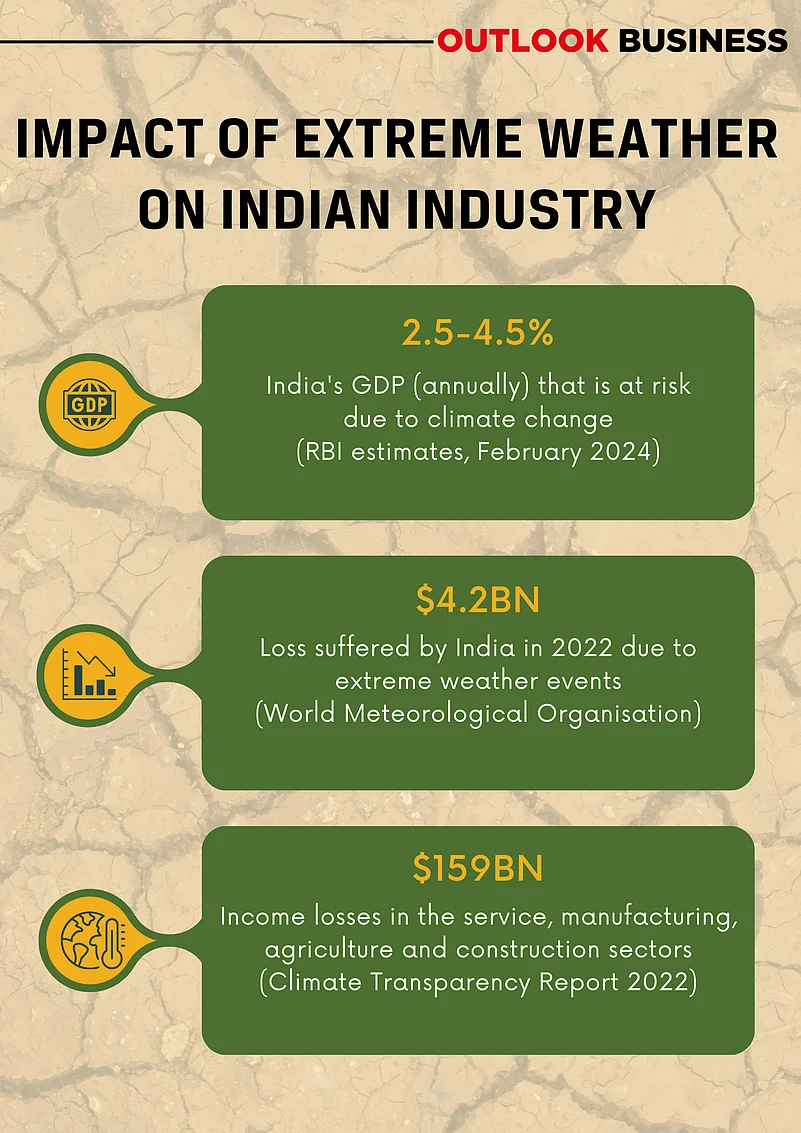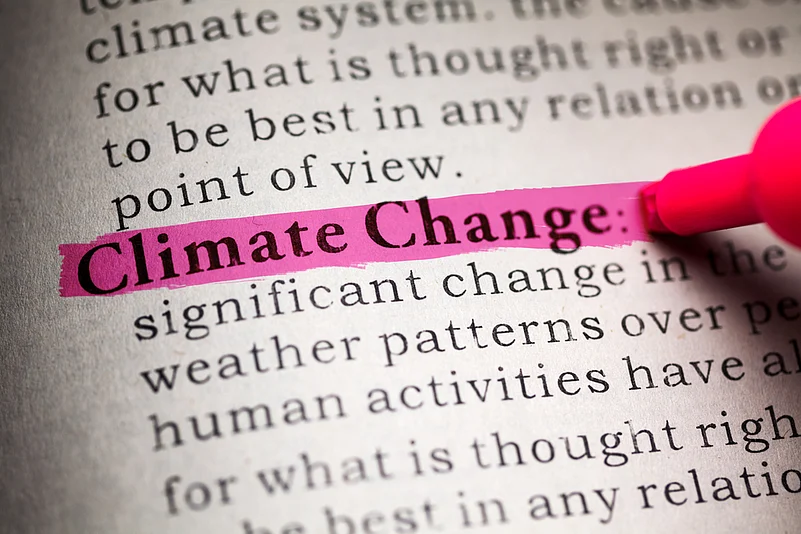Earlier this month, the India Meteorological Department flagged flash flood risks in parts of Uttarakhand, Himachal Pradesh and gangetic Bengal—issuing 'red' (take action) and 'orange' (be prepared) alerts—due to heavy rainfall. The alerts came amid forecasts that the monsoon in North India is expected to cover the whole of September.
Instances of nature’s fury are still fresh on peoples' minds. In July, flash floods and landslides in Wayanad, Kerala, claimed around 300 lives, displaced an estimated 10,000 people and damaged property worth Rs 1,200 crore.
Between March and June 2024, India experienced record-breaking heat, with 37 cities surpassing 45 degrees Celsius, media reports say. The Union Ministry of Health and Family Welfare officially reported 360 heatstroke deaths this summer, while other independent studies have put out a much higher number.
Advertisement

The extreme climate events took a toll on livelihoods and businesses. Many shops in several north Indian cities downed their shutters in afternoons. Zomato urged users to avoid ordering food in the afternoon to protect its riders from the heatwave.
The owner of a small-scale manufacturing unit operating out of the Delhi-NCR region complained of frequent breakdowns of the cooling system in his factory this summer. Each breakdown led to manhour and production losses.
For sectors like agriculture, infrastructure, construction, energy and insurance industries, the physical hazards of climate change are becoming more severe as well as more frequent. In course of the year the spotlight has turned to the adaptability of businesses to climate risks. Experts find corporate India’s response to exigencies of climate risk patchy, at best.
Advertisement
An S&P Global Sustainable 1 analysis of 187 India-headquartered companies published in September last year found that only a quarter of them had plans to adapt to the physical impact of climate change. The extreme weather events in the past year has further exposed how little India Inc. is prepared against climate risks.
No Longer a Distant Threat
The adverse impacts of climate change are either chronic (temperature increase, sea level rise and change in precipitation) or acute (storms, heatwaves and floods).
“Climate hazards are no longer a distant threat. They are tangibly impacting human lives, resources, operations and infrastructure and even business continuity,” says Srinivasan Ramabhadran, managing director, APAC, dss+, a global consultancy firm, that specialises in the sustainability and ESG space.
Companies across the Asia-Pacific region have had an impact on their operations and supply chain, either because of excessive rain, floods or excessive heat, impacting their topline revenue and bottomline profits, adds Ramabhadran.

While recent incidents have forced many businesses to re-examine their business continuity plans, experts point out that the progress in responding to these risks has not been uniform.
Take for instance, Godrej Industries. The 125-year-old business conglomerate has been ahead of the curve in climate action.
But when it assessed climate risks at its manufacturing plants a couple of years ago the top management was surprised to find a significant amount of water stress. “Our facilities had zero liquid discharge, and we were multiple times water positive (contributed more water than it consumes),” says Ram Vaidyanathan, head - environmental sustainability at the Godrej Group.
Advertisement
Following the assessment, the group changed its water strategy from conservation to stewardship. This meant it would now include surrounding communities and industries to battle water stress. “This is now the primary thrust of our water strategy, and integrated into our manufacturing plan and overall strategy,” says Vaidyanathan.
Clearly, businesses need to constantly assess their climate resilience progress to stay ahead of the curve.
However, the fact remains that a majority of businesses in India still view climate resilience as a secondary concern. Many companies are hesitant to disclose their vulnerabilities and plans, fearing repercussions.
“This lack of transparency hinders the collective effort needed to effectively address the growing threat of extreme climate events,” adds Ramabhadran.
Advertisement
Over last couple of years, the two key financial regulators—Sebi and the Reserve Bank of India—have become proactive in sensitising regulated entities under their ambit about climate change risks.
RBI’s climate Vulnerability Assessment and Stress Testing (VAST) exercise in 2022 found that floods and cyclones alone could increase credit losses by over 65 per cent, while the transition to a low-carbon economy could lead to a 100 per cent increase in credit losses by 2050.
“Data limitations and expertise gaps hinder climate risk assessment. While the banking sector is increasingly cognisant of climate risks, progress remains uneven,” says Sagar Asapur, head, sustainable finance at Climate Risk Horizons, India.
Advertisement
The Wake-up Call
Environment experts say businesses must work on both mitigation and adaptation measures to counter climate issues, including extreme weather events. Given the location-specific nature of extreme climate events, all stakeholders—industry, policymakers, civic society, experts—must work together to develop state and district specific resilience plans.
Industry lobby group, Confederation of Indian Industry (CII), along with think-tank, Council on Energy, Environment and Water (CEEW), conducted a survey to gather insights into how climate risks are assessed and prioritised across sectors. A recent study on the subject, ‘Building Climate Resilience for Indian Industry’ finds one of the biggest initial challenges in building industry’s adaptive capacity has been the absence of a unified framework for assessing climate risks across sectors.
Advertisement
Limited access to reliable climate data, inadequate use of technologies in resilience strategies, lack of established funding sources, and the complexity associated with modelling and forecasting extreme weather events, are among the key factors affecting India Inc’s climate resilience preparedness, the study found.
The study has come out with a framework to assess and quantify climate risks for Indian businesses and their value chains. However, experts and industry players agree that these are still early days in helping Indian businesses build their climate resilience quotient.
As Sanjiv Puri, president, Confederation of Indian Industry and chairman & managing director, ITC puts it, addressing the impact of climate change is a very complex endeavour and needs intense collaboration of policymakers, businesses and civil society.















 Just one email a week
Just one email a week